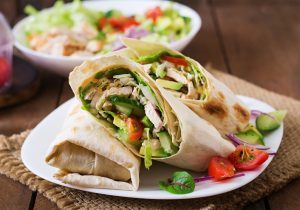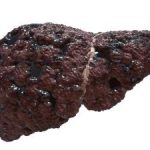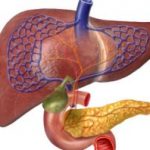 NAFLD—non-alcoholic fatty liver disease—is the most common liver disease in the United States. It is associated with a high rate of death among Americans today. The condition is the result of abnormal fat accumulation within the liver, leading to scarring and abnormal function. Long-term complications of liver disease may result in gastrointestinal bleeding, mental status changes, and even cancer.
NAFLD—non-alcoholic fatty liver disease—is the most common liver disease in the United States. It is associated with a high rate of death among Americans today. The condition is the result of abnormal fat accumulation within the liver, leading to scarring and abnormal function. Long-term complications of liver disease may result in gastrointestinal bleeding, mental status changes, and even cancer.
To help equip you with the tools you need to better understand this condition, we have compiled a list of informative articles on the subject. You will find current information on NAFLD treatment, liver fibrosis risk, and an NAFLD diet plan to better keep your liver healthy and working efficiently.
NAFLD diet plan: Dietary guidelines for non-alcoholic fatty liver disease
Advertisement
Non-alcoholic fatty liver disease (NAFLD) is characterized by the abnormal accumulation of fat within the liver. When fat accumulates in the liver, it prevents the liver from performing its many functions, potentially leading to scarring and further damage. Complications associated with NAFLD include liver cancer, fluid accumulation, gastrointestinal bleeding, and mental changes.
Following a healthy NAFLD diet plan can help reduce the liver damage and slow down the progression of NAFLD. This is because anything we take into the body is filtered through the liver. Eating unhealthy foods further sickens the liver and contributes to further progression of the disease. Continue reading…
 High-calorie diet—not sugar intake—promotes non-alcoholic fatty liver disease
High-calorie diet—not sugar intake—promotes non-alcoholic fatty liver disease
High-calorie diet, not sugar intake, promotes the progression of non-alcoholic fatty liver disease (NAFLD), according to research findings. The researchers conducted a double-blind study of healthy but centrally overweight men to compare the effects of two types of sugar—glucose and fructose—in two conditions: weight maintaining and weight gaining.
In the weight-maintaining period, men did not develop any significant changes to the liver, regardless of their diet (moderate-calorie vs. high-calorie diet). In the weight-gaining period, however, both diets produced equivalent features of non-alcoholic fatty liver disease. Continue reading…
 Non-alcoholic fatty liver disease and diabetes together may increase liver fibrosis risk: Study
Non-alcoholic fatty liver disease and diabetes together may increase liver fibrosis risk: Study
Non-alcoholic fatty liver disease develops when fat accumulates in the liver. This can occur in individuals who don’t drink alcohol or who drink in moderation. In some people, non-alcoholic fatty liver disease (NAFLD) causes no symptoms or complications. However, if it progresses, it can ultimately lead to liver failure.
If you’re diabetic you should also be concerned about your liver health. Diabetes can put a person at an increased risk for non-alcoholic fatty liver disease. The Mayo Clinic reports that at least half of diabetics with type 2 diabetes will develop non-alcoholic fatty liver disease. Other contributing factors of non-alcoholic liver disease include being overweight, high cholesterol, and high blood pressure. Continue reading…
 Non-alcoholic fatty liver disease, new treatment found in a study
Non-alcoholic fatty liver disease, new treatment found in a study
New treatment for non-alcoholic fatty liver disease (NAFLD) has been uncovered in a study. The researchers found a new pathway in the liver, shedding light on a new potential means of treating NAFLD.
The researchers found that a protein TRPV4, part of the defense system of the body, can activate the release of nitric oxide. Why is this significant? Nitric oxide blocks the enzyme CYP2E1 that largely contributes to the progress of NAFLD. The protein TRPV4 has previously been found to help protect against cardiovascular disease.
Advertisement
With this new discovery, the next step is to try harnessing TRPV4’s abilities in preventing and treating the liver disease.
Research lead Saurabh Chatterjee explained, “There are currently no clinically proven drugs to treat non-alcoholic fatty liver disease. Our goal is to find novel pathways in the liver that will result in a road to a cure, and this novel internal defense mechanism within the liver offers a very promising route.” Continue reading…
 Non-alcoholic fatty liver disease risk can be lowered with exercise: Study
Non-alcoholic fatty liver disease risk can be lowered with exercise: Study
Non-alcoholic fatty liver disease (NAFLD) risk can be lowered with exercise. NAFLD is becoming the most common form of liver disease in the Western world as rates of obesity continue to rise. NAFLD has long been associated with diabetes and obesity and there are currently no approved treatment methods for this disease. For this reason, it’s important to prevent NAFLD as best as possible which can be done by effectively managing diabetes and your body weight.
Weight loss is a known tactic to combat both obesity and diabetes. Weight loss if often recommended for NAFLD patients as a means to slow down disease progression. Aerobic and resistance exercises are effective for reducing liver fat and visceral fat. What is unclear is how much of exercise is required to start improving NAFLD. Continue reading…
